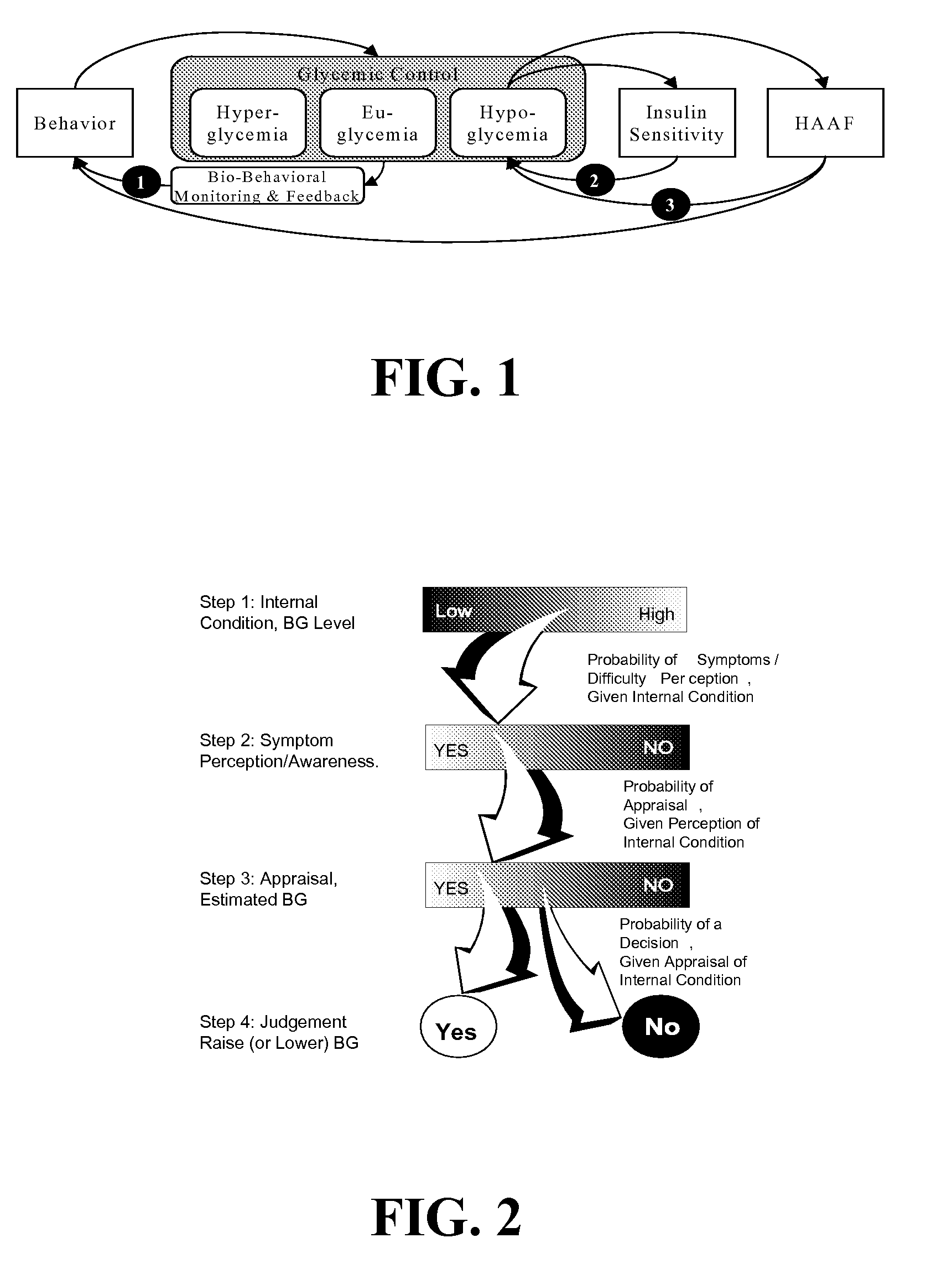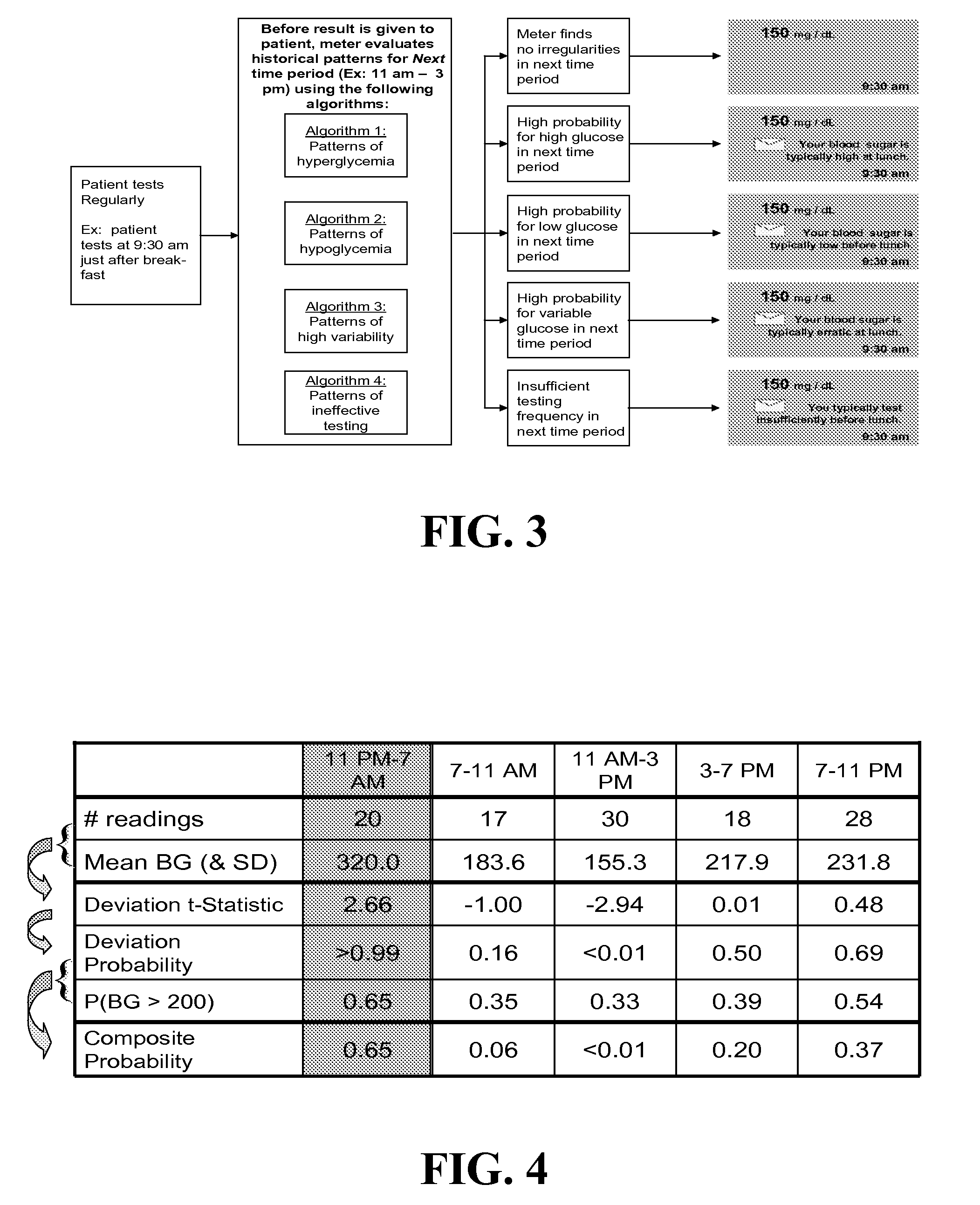Systems, Methods and Computer Program Codes for Recognition of Patterns of Hyperglycemia and Hypoglycemia, Increased Glucose Variability, and Ineffective Self-Monitoring in Diabetes
a hyperglycemia and hypoglycemia technology, applied in the field of glucose monitoring, can solve the problems of increasing the risk of hypoglycemia, cognitive dysfunction, stupor, sudden death, and potentially life-threatening severe hypoglycemia (sh)
- Summary
- Abstract
- Description
- Claims
- Application Information
AI Technical Summary
Benefits of technology
Problems solved by technology
Method used
Image
Examples
Embodiment Construction
[0051]An aspect of various embodiments of this invention is, but not limited thereto, that providing real-time information to the patient about upcoming periods of possible hyperglycemia, possible hypoglycemia, increased glucose variability, or insufficient or excessive testing, will prompt appropriate treatment reaction and will thereby lead to better diabetes control. FIG. 3 illustrates this basic concept:
[0052]At each SMBG measurement and prior to the presentation of SMBG result the device evaluates historical patterns of glycemia and, based on this evaluation, issues warnings for the next time period. These warning include high risk for hyperglycemia or hypoglycemia, increased glucose variability, insufficient or excessive testing (FIG. 3).
[0053]The systems, methods and algorithms enabling the messaging system are the subject of this invention disclosure. The theoretical background has been established by our theory of risk analysis of BG data (27, 28, 30) and follows previously...
PUM
| Property | Measurement | Unit |
|---|---|---|
| time | aaaaa | aaaaa |
| time | aaaaa | aaaaa |
| time | aaaaa | aaaaa |
Abstract
Description
Claims
Application Information
 Login to View More
Login to View More - R&D
- Intellectual Property
- Life Sciences
- Materials
- Tech Scout
- Unparalleled Data Quality
- Higher Quality Content
- 60% Fewer Hallucinations
Browse by: Latest US Patents, China's latest patents, Technical Efficacy Thesaurus, Application Domain, Technology Topic, Popular Technical Reports.
© 2025 PatSnap. All rights reserved.Legal|Privacy policy|Modern Slavery Act Transparency Statement|Sitemap|About US| Contact US: help@patsnap.com



